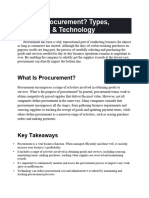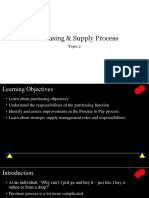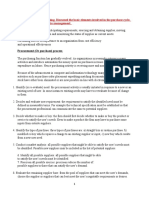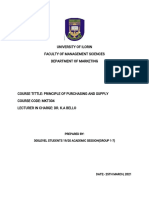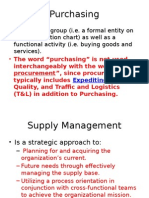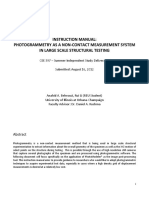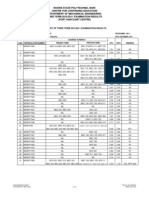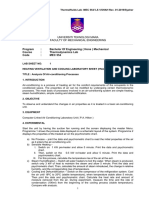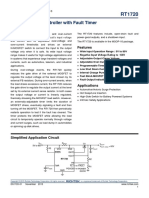0% found this document useful (0 votes)
6 views15 pagesPMGS Topic2
The document outlines the procurement policy, process, and procedures essential for effective organizational procurement management. It discusses procurement objectives, the procurement process, purchasing situations, and strategic sourcing methodologies. Additionally, it emphasizes the importance of integrated business practices and the roles of various stakeholders in the procurement decision-making process.
Uploaded by
Wade JacksonCopyright
© © All Rights Reserved
We take content rights seriously. If you suspect this is your content, claim it here.
Available Formats
Download as PDF, TXT or read online on Scribd
0% found this document useful (0 votes)
6 views15 pagesPMGS Topic2
The document outlines the procurement policy, process, and procedures essential for effective organizational procurement management. It discusses procurement objectives, the procurement process, purchasing situations, and strategic sourcing methodologies. Additionally, it emphasizes the importance of integrated business practices and the roles of various stakeholders in the procurement decision-making process.
Uploaded by
Wade JacksonCopyright
© © All Rights Reserved
We take content rights seriously. If you suspect this is your content, claim it here.
Available Formats
Download as PDF, TXT or read online on Scribd
/ 15


























